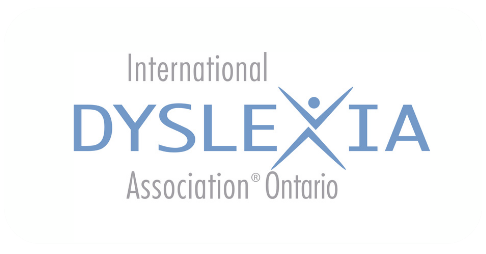Continuum des notions fondamentales de la lecture et de l’écriture
de la 1ʳᵉ à la 4ᵉ année, attente B2
Thèmes
Vocabulaire
Le développement de la connaissance du vocabulaire est le processus d’acquisition de nouveaux mots et de la compréhension de leur signification tant sur le plan réceptif qu’expressif.
Le vocabulaire réceptif est constitué des mots que l’élève comprend lorsqu’elle ou il les entend ou les lit et le vocabulaire expressif est constitué des mots que l’élève utilise lorsqu’elle ou il parle ou écrit. L’élève comprend le sens, l’usage et la forme des mots; le vocabulaire de l’élève s’enrichit à mesure qu’elle ou il apprend à reconnaître les associations entre les mots nouveaux. Le vocabulaire est développé à la fois par l’enseignement explicite des mots et par l’apprentissage implicite en travaillant avec la langue orale et les textes écrits dans divers contextes.
L’élève met en application sa compréhension du fait que les mots sont composés de morphèmes, qui servent d’unités de sens à l’intérieur du mot, et utilise ses connaissances des morphèmes pour soutenir sa compréhension du sens des mots.
Connaissances et habiletés
Annexe A
Voir tous les détails dans ce document: Annexe A. Continuum des notions fondamentales de la lecture et de l’écriture, de la 1ʳᵉ à la 4ᵉ année, attente B2.
Développement
Le processus de développement du vocabulaire implique l’acquisition de nouveaux mots et la compréhension de leur sens. Nous apprenons de nouveaux mots de manière aléatoire (par exemple, lors d’expériences riches en langage oral, telles que l’écoute de lectures à haute voix) et par le biais d’un enseignement systématique et explicite du vocabulaire dans les textes. Lorsque les élèves apprennent de nouveaux mots, elles ou ils en apprennent le sens, l’utilisation, la forme (famille de mots) et les relations avec d’autres mots.
Au départ, le vocabulaire oral des élèves est plus étendu que le vocabulaire imprimé ; cependant, au fur et à mesure que les élèves deviennent des lecteurs et lectrices plus habiles, la lecture des textes imprimés joue un rôle plus important dans l’acquisition du vocabulaire. Les mots que nous observons dans les textes imprimés ont tendance à être plus complexes que ceux du vocabulaire parlé ou de la conversation sociale.
Les nouveaux mots ne sont pas appris instantanément. Ils entrent dans la mémoire à long terme par le biais d’une série d’étapes et de nombreuses expositions, afin d’être repérés plus tard.
Importance
Le vocabulaire joue un rôle essentiel dans la compréhension de la langue (Biemiller, 2015). Il est essentiel pour comprendre la langue parlée et les textes, ainsi que pour apprendre à lire. Une fois que les élèves ont décodé un mot, elles et ils doivent le relier à un mot de leur vocabulaire oral. Lorsque les mots font partie du vocabulaire oral d’un élève, elle ou il peut les décoder et les comprendre plus rapidement et plus facilement (Honig et al. 2018).
Certains élèves entrent à l’école avec un vocabulaire plus restreint que celui de leurs pairs. Une intervention précoce pour soutenir la croissance du vocabulaire oral est essentielle pour ces élèves, car un faible vocabulaire aux cycles préparatoire et primaire est un facteur de risque pour les résultats scolaires futurs (Dale et al. 2023).
Le développement du vocabulaire est particulièrement important pour les apprenantes et les apprenants dont la langue maternelle n’est pas le français. Ces élèves peuvent avoir besoin d’un enseignement explicite des mots qui peuvent être considérés comme étant du niveau 1, en plus d’un enseignement explicite, à l’échelle de la classe, des mots du niveau 2.
Enseignement
Le nouveau vocabulaire doit être enseigné à l’aide d’une démarche pédagogique explicite. Celle-ci se caractérise par un modelage direct, une pratique guidée et une pratique individuelle ciblée. Les étapes pourraient être les suivantes:
- Présenter le mot en l’écrivant afin que les élèves puissent le lire. Encourager les élèves à le prononcer. Discuter de ses caractéristiques, y compris son orthographe, sa classe de mots, ses morphèmes, son étymologie et ses dérivés.
- Fournissez une définition adaptée aux élèves. Envisagez de montrer une image.
- Utilisez le mot dans différents exemples et contextes.
- Vérifiez la compréhension des élèves en leur demandant d’offrir des exemples et des non-exemples.
- Demandez aux élèves d’utiliser le mot. (Archer & Hughes, 2011 ; Tolman, 2019)
Comment savoir quels mots enseigner?
Niveau 1 : mots que l’on retrouve plutôt dans le langage parlé. Il s’agit de mots courants et probablement familiers.
Niveau 2 : mots très utiles (utilisés dans de nombreuses matières) et qui pourraient faire partie du discours parlé. Ces mots sont les plus importants à enseigner en plus grand détail.
Niveau 3 : mots reliés à des matières particulières. Nous voudrions définir ceux-ci brièvement. (Beck et al. 2013 ; Tolman et al. 2019)
Après avoir enseigné du nouveau vocabulaire de façon explicite, il est important de fournir maintes occasions pour le lire et l’utiliser. Ceci permettra aux élèves d’augmenter la probabilité que ces nouveaux mots entrent dans la mémoire à long terme.
Les recherches confirment que l’on peut enseigner directement environ deux bases ou familles de mots par jour, ou environ dix par semaine (Honig, 2018).
Il est impossible d’enseigner directement tous les mots du français. Enseigner aux élèves les familles de mots et les bases peut les aider à établir des liens entre des mots familiers et des mots nouveaux. Comprendre les préfixes, les suffixes et les bases des mots aide les élèves à déterminer le sens de mots inconnus qui seront retrouvés en lecture ou lors de leurs conversations.
Évaluation au service de l’apprentissage
« Le but premier de toute évaluation et de la communication du rendement est d’améliorer l’apprentissage de l’élève. »
Faire croître le succès, 2010, p. 6
Plusieurs méthodes d’évaluation doivent être utilisées pour obtenir une image complète des connaissances, de la compréhension et de la mise en application du vocabulaire des élèves. Parmi les méthodes d’évaluation du vocabulaire couramment utilisées, on peut inclure:
- des mesures de compréhension de la lecture
- une analyse d’échantillons d’écrits
- des tests de vocabulaire
- des travaux qui exigent la conversation et l’expression orale (par exemple, suivre une série de consignes)
- des listes de mots

Financé par

Le financement de ces ressources est assuré par le ministère de l'Éducation. Veuillez noter que les opinions exprimées dans ces ressources sont celles d'ONlit et ne reflètent pas nécessairement celles du ministère de l'Éducation.
Financé par

Le financement de ces ressources est assuré par le ministère de l'Éducation. Veuillez noter que les opinions exprimées dans ces ressources sont celles d'ONlit et ne reflètent pas nécessairement celles du ministère de l'Éducation.
© 2023 ONlit. Tous droits réservés.


